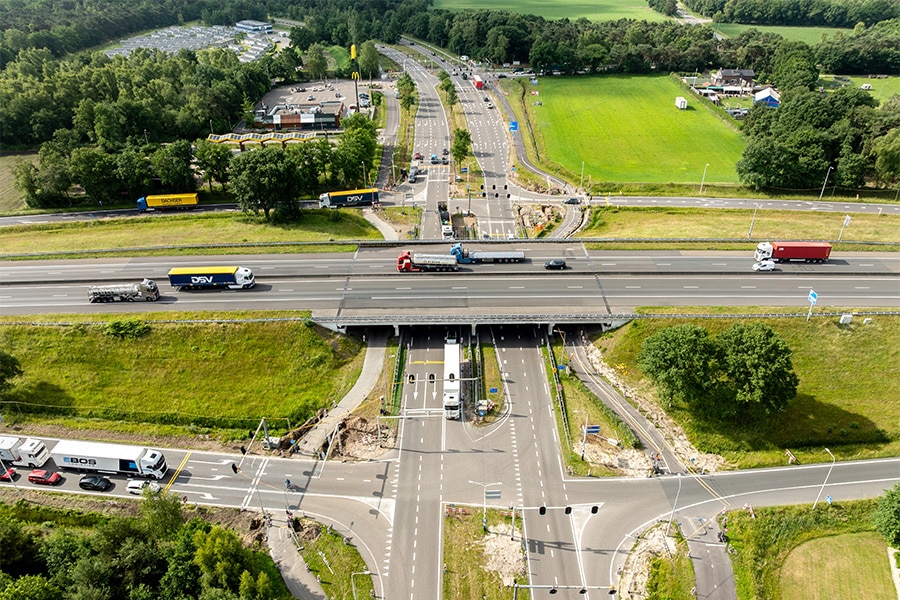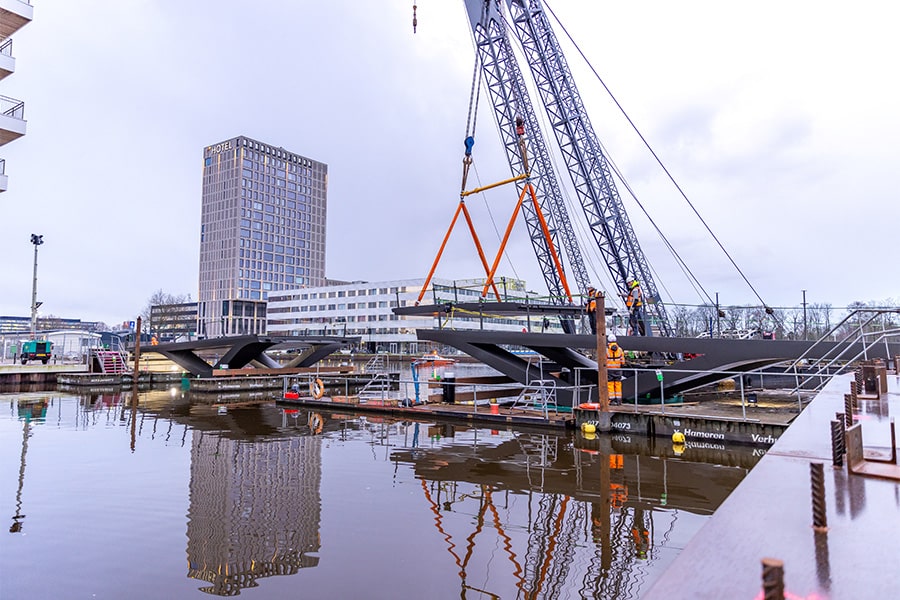
Road construction in Arnhem more sustainable than ever: electric as much as possible
Arnhem is going to use electric equipment as much as possible when constructing or redesigning roads. This ensures cleaner air in the city and is also much quieter for local residents and road workers. Small equipment such as vibrating plates, mini cranes or small shovels will be required to be electric. Where possible, mobile cranes, trucks or an entire asphalt set will also be used electrically. Such as during the construction of bicycle path Grote Griet in Arnhem-Zuid.
Large electrical equipment
Electric cars are now normal on the streets. As are electric trolley buses, another well-known Arnhem phenomenon. Now that more and more (heavy) electric equipment is becoming available for road construction, Arnhem wants to take maximum advantage of this. When building or modifying a road, it is therefore prescribed that 'smaller' equipment (with a capacity up to 37 kW) must be electric. In some cases, additional requirements for larger electric equipment are added. Alderman for Sustainable Mobility Nermina Kundić: "This way we contribute significantly to cleaner air in the city. And it saves a lot of noise. Count your profits.'

45 tons less CO2 emissions
The "zero-emission requirements" have been in place since this year. By 2024, eight major projects will already be carried out with as much electric equipment as possible. A hefty reduction in CO2 emissions will be realized in those projects. At Grote Griet, reductions of 45 tons of CO2 are expected. That is equal to the amount of CO2 that 1793 trees absorb in a year, or what 320 solar panels save in a year compared to gray electricity.
'Industrial' charging point
One of the challenges is: where to connect the electric excavators and trucks to the charging station? An ordinary car charging station is usually not suitable for large road construction equipment. Moreover, a large truck or mobile construction crane, for example, is not supposed to spend the whole night charging in a residential area. Kundić: "For this purpose, we have specially set up an 'industrial' charging point in the Kleefse Waard industrial park. That has a capacity five to ten times higher than a normal charging point for electric cars. They can charge there without any problems.'

Clean and quiet
The Grote Griet bike path runs along the dike between Meinerswijk and Batavierenweg and Eldensedijk. An ideal place to go quiet and cleaner. Meinerswijk is always bursting with animals, such as the wild heron, the gray goose and the white-fronted goose. Foxes and beavers also occur there in the wild. The existing narrow bike path will be doubled in width and will also receive lighting. That lighting will be 'smart and economical': as soon as it gets dark, it will burn at 10 percent strength. Only when a cyclist passes by do the lights come on full blast. 'The lights cycle with the cyclist, as it were, so they are a lot more economical. This makes the bicycle connection between South and North a lot more comfortable and makes cycling an increasingly attractive alternative," Kundić concludes.



